I recently did an exam for university and I got asked what would be the output of this program:
def fun(x):
y=x
x.append(4)
print(str(x)+" "+str(y))
fun(["one","two",3,5.0])
I answered that the y list would be ["one","two", 3,5.0] and after appending 4 to it, the x list would be equal to the same but with a 4 at the end of it. To my surprise, when I printed both lists, they were equal even though the x list update was performed after establishing an equality between both lists. Why did this happen?
Thank you

